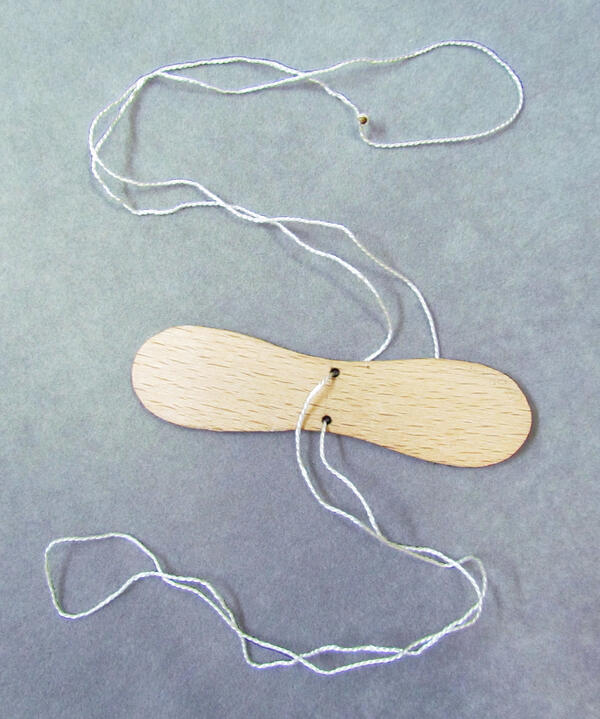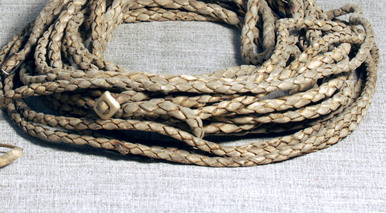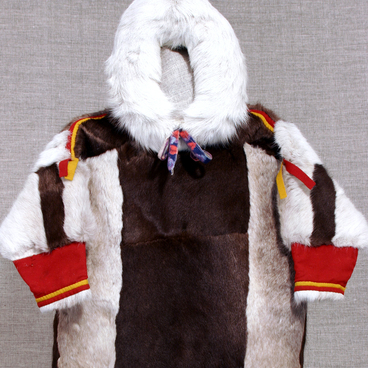The Forest Nenets are small indigenous peoples inhabiting the territory of Yamalo-Nenets Autonomous Okrug. They are nomads with unique culture and traditions. From the early times, the Forest Nenets provide themselves with household items on their own. Women make threads of reindeer tendons, process skins and sew warm clothing and footwear for their families. Men produce ammunition for hunting and sledges for migration, wooden utensils and cradles. Peculiar handmade children toys are a part of traditional material and spiritual Forest Nenets culture.
Northern children play many different amusing games. But these games not only amuse but also develop fine motor skills and logic, teach traditional activities like hunting or reindeer herding, they provide explanation of the surrounding world like changing of seasons, natural phenomena and other things. Through these games children discover their people’s values and realize their connection with them.
Valery Pyak, a resident of a camp settled on the territory of Purovsky district in the Pur river valley, provided the exposition of Gubkinsky Museum of the Development of the North with traditional Nenets toys. One of them is called ‘vyl’su’, which is translated from the Forest Nenets language as “the sound of wind”. The Tundra Nenets call it “vyvko”, which stands for a buzzer.
In the recent past, this toy was a small square or rectangular plank with a strong reindeer tendon thread running through two holes and making a loop. A “vyl”su” design has changed a bit over time and now it looks like an oval plank with the same two holes in the middle. To activate the toy, one should stretch the loop with two hands, then roll and again stretch sharply, causing the plank to spin like a propeller and sound like the wind howling. That is why children call it “the song of wind” or “the sound of wind”. A “vyl”su” toy is supposed to have been an aerophonic musical instrument and was used to summon strong wind to chase away mosquitoes, gadflies and heat.
Northern children play many different amusing games. But these games not only amuse but also develop fine motor skills and logic, teach traditional activities like hunting or reindeer herding, they provide explanation of the surrounding world like changing of seasons, natural phenomena and other things. Through these games children discover their people’s values and realize their connection with them.
Valery Pyak, a resident of a camp settled on the territory of Purovsky district in the Pur river valley, provided the exposition of Gubkinsky Museum of the Development of the North with traditional Nenets toys. One of them is called ‘vyl’su’, which is translated from the Forest Nenets language as “the sound of wind”. The Tundra Nenets call it “vyvko”, which stands for a buzzer.
In the recent past, this toy was a small square or rectangular plank with a strong reindeer tendon thread running through two holes and making a loop. A “vyl”su” design has changed a bit over time and now it looks like an oval plank with the same two holes in the middle. To activate the toy, one should stretch the loop with two hands, then roll and again stretch sharply, causing the plank to spin like a propeller and sound like the wind howling. That is why children call it “the song of wind” or “the sound of wind”. A “vyl”su” toy is supposed to have been an aerophonic musical instrument and was used to summon strong wind to chase away mosquitoes, gadflies and heat.




